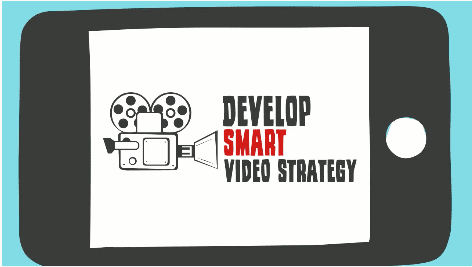I don’t know about you, but I find it impossible not to watch Tasty videos when I see one on Facebook or Instagram. Although I’ve yet to make a Cinnamon Roll Breakfast Muffin, I’m instantly hooked (along with millions upon millions of people) Every. Single. Time.
Taco Bell tapped into this popular one-minute-recipe trend in a series of Instagram Carousel ads (which recently launched a video component) to promote its new $1 breakfast menu. The brand’s videos playfully poke fun at the downside of cooking (rogue egg shells, charred meat, toaster fires), and entice people to grab something for a buck at Taco Bell instead. Their video content strategy put a twist on a popular social trend and was executed on the platform where that content format is voraciously consumed (pun intended).
Simple, right?
Actually, developing your video content strategy really can be that simple. Creating original content (advertising asset or not!) is one of the most authentic, powerful ways to tell your brand story and engage consumers online, especially on their mobile devices. According to research conducted by Google and Ipsos MediaCT, smartphone video viewers are significantly more likely to watch, share, and feel personally connected to ads and branded video content than their counterparts watching on desktop or television.
A video content strategy creates the foundation for strong social engagement by:
- Helping you determine what’s “ownable” and authentic to your brand
- Aligning your business goals with your content
- Ensuring you’re consistently communicating your brand under a unique, value-driven identity (which is crucial in a crowded digital space where there’s lots of competition for attention and eyeballs)
- Fueling the development of content that meets your customers’ needs and supports how they seek information online
Your video content strategy should be the intersection of what your brand represents and what your audience cares about.
So, before hitting record, hone in on your target audience:
- What kind of information are they looking for online and what do they care about?
- How are they searching for it?
- Which platforms are they using most?
- What devices are they on?
Once you determine how to communicate the way your brand meets your audiences’ needs, follow these four tips when you move into production:
- Remember, video content is not one-size-fits-all. A piece produced for Facebook won’t be the right fit for Instagram or Snapchat. So your content strategy needs to optimize your video across channels (whether that’s creating different versions or focusing efforts on one platform where you know your audience spends their time). Tip: Learn from your content. Track metrics throughout your campaign to see what’s working and what’s not. This allows you to shift your advertising and promotion strategy and invest more in content that’s getting the most engagement.
- Storytelling is the heart of great video. Your content isn’t about pushing a product. It’s about bringing what your brand stands for to the forefront (and getting people on board so they feel good about choosing the product). A new campaign from Jockey, Show ‘Em What’s Underneath, features three inspirational video stories: A S. Marine veteran who lost his legs while serving in Afghanistan; a female firefighter; and an adoptive dad. Yes, ultimately, they want you to choose their brand when you need to restock the underwear drawer. But this is a compelling way to show that Jockey stands for more, and hopes to encourage people to be confident with who they are.
- Collaborate to maximize your reach. Video production takes a lot of resources—time, money, and staff. Partnering with influencers on content creation is a simple, effective way to get your brand values out there, while having someone else do the legwork. From our collaborations with Marriott to Whole Foods, we’ve connected brands with top tier bloggers and social influencers that authentically tell their stories to new audiences. The bloggers we choose care about their user base and sharing content that really resonates. So it’s a two-way street: they have to be a good fit for the brand, and the brand has to be a good fit for them or else they’ll lose credibility with the audience they’ve worked so hard to build.
- Don’t underestimate the value of organic user-generated content. While you don’t have control over the production quality (and lots of other things like what the users will actually say), a brand’s customers can be their best, most authentic advocates. Kohl’s recently hit the free marketing jackpot thanks to Chewbacca Mom, whose Facebook Live video of her trying on a Chewbacca mask in the car outside of Kohl’s propelled her to America’s Favorite Mom status. (And let’s be clear, it’s her mask, it was not purchased for her kids. But she’s willing to share.) The video garnered over 150 million views thanks to her infectious laugh and the experience of finding joy in something so simple. It tapped into people’s emotions, was authentic, and best of all, totally free. This type of content amplification is a rarity, but it happens. (#Maytheforcebewithyou) But brands should think about ways to connect with their audiences emotions through these kinds of shared experiences. Be on the lookout for great content generated by your fans that you can curate and re-share on your own channels.
Now more than ever, mobile’s small screen is helping brands make a big impact in delivering what consumers want and need through video… whether that’s breakfast, underwear, or a Chewbacca mask.

